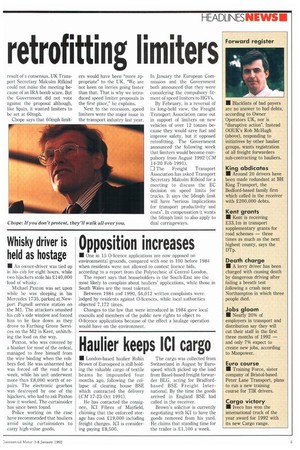retrofitting limiters
Page 7

If you've noticed an error in this article please click here to report it so we can fix it.
result of a consensus. UK Transport Secretary Malcolm Rifkind could not make the meeting because of an IRA bomb scare. But the Government did not vote against the proposal although, like Spain, it wanted limiters to be set at 60mph.
Chope says that 60mph limit ers would have been "more appropriate" to the UK. "We are not keen on lorries going faster than that. That is why we introduced speed limiter proposals in the first place," he explains.
Next to the recession, speed limiters were the major issue in the transport industry last year. In January the European Commission and the Government both announced that they were considering the compulsory fitment of speed limiters to HGVs.
By February, in a reversal of its long-held view, the Freight Transport Association came out in support of limiters on new vehicles of over 12 tonnes because they would save fuel and improve safety, but it opposed retrofitting. The Government announced the following week that limiters would become compulsory from August 1992 (CM 14-20 Feb 1991).
El The Freight Transport Association has asked Transport Secretary Malcolm Rifkind for a meeting to discuss the EC decision on speed limits for trucks. It says the 56mph limit will have "serious implications for transport productivity and costs". In compensation it wants the 56mph limit to also apply to dual carriageways.
























































